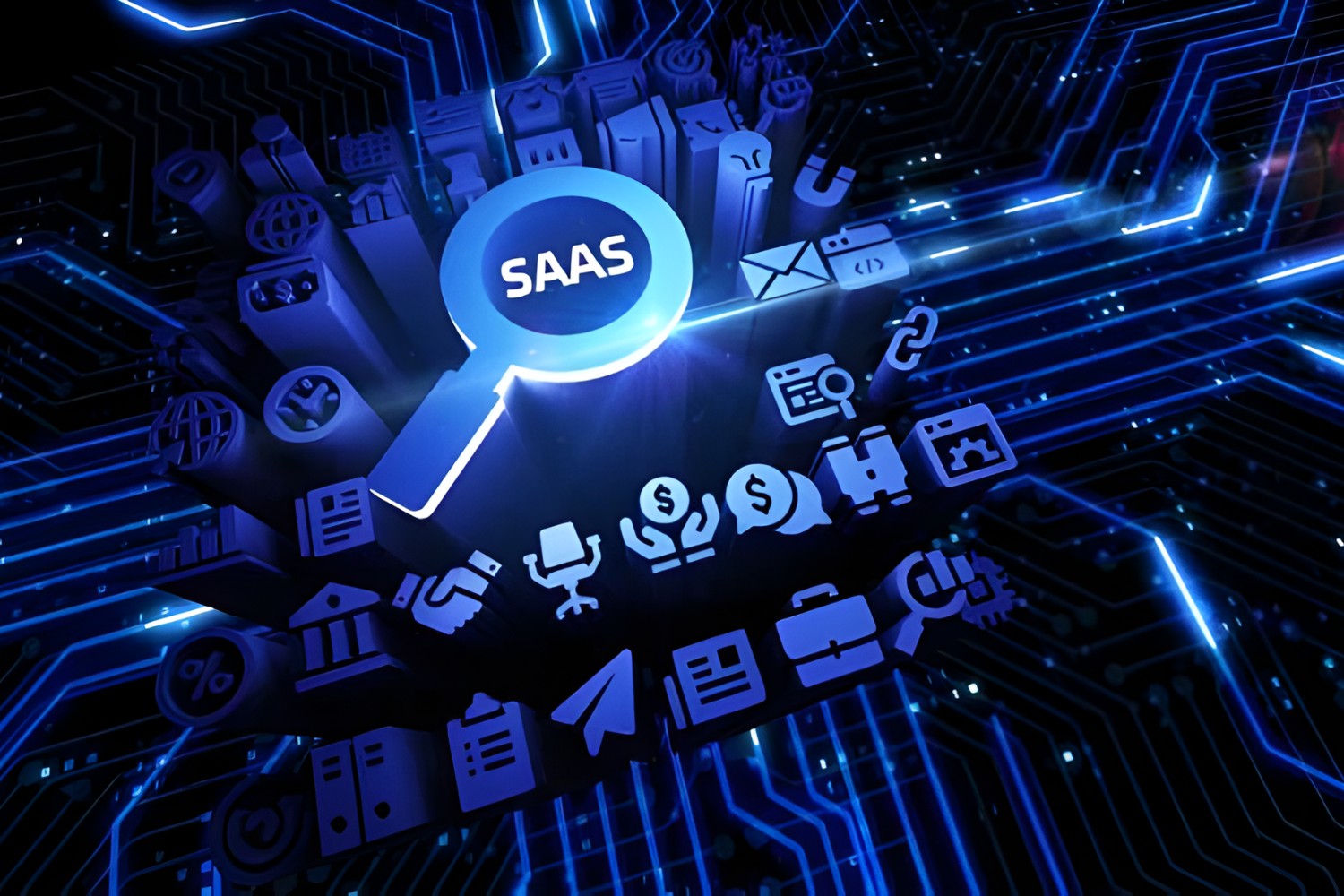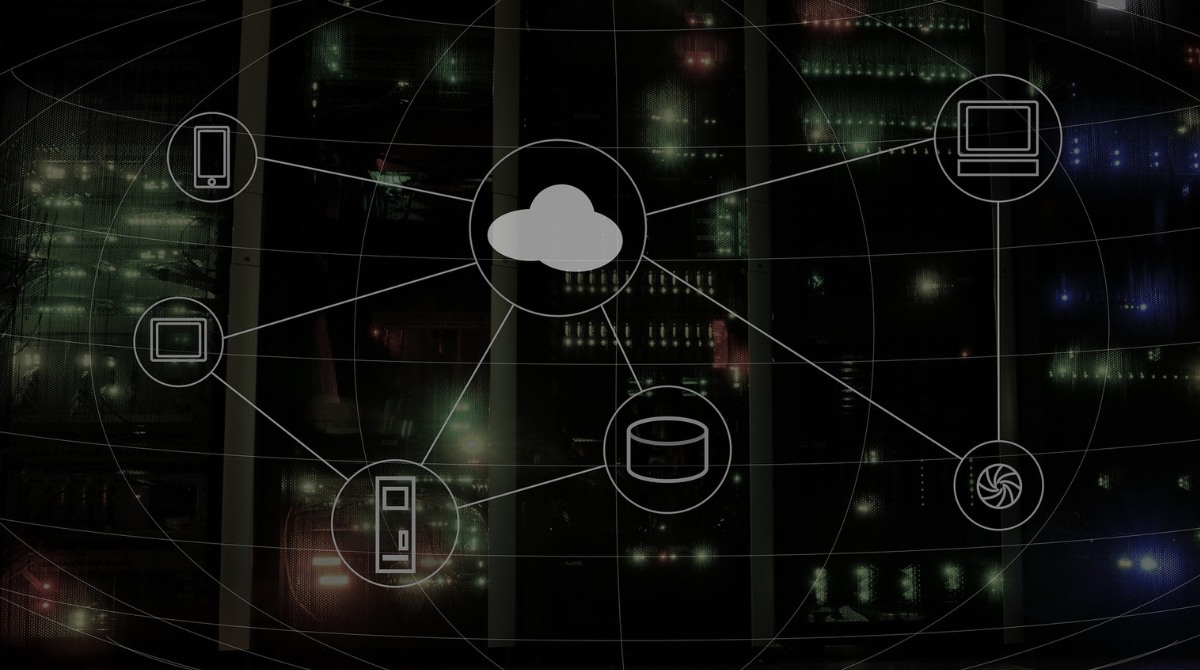Introduction
Welcome to the exciting world of growing a Software as a Service (SaaS) business! As a SaaS entrepreneur, you have embarked on a journey filled with opportunities and challenges. The SaaS industry has gained significant traction in recent years, offering businesses a cost-effective and flexible solution for their software needs.
In this article, we will explore the essential steps to take when growing a SaaS business. From assessing your current stage of growth to scaling your operations, we will cover everything you need to know to succeed in this competitive landscape.
Before we dive into the specifics, it’s important to understand the unique nature of the SaaS industry. Unlike traditional software models, SaaS operates on a subscription-based model, providing customers with ongoing access to software and services. This recurring revenue model offers immense potential for growth and stability.
However, with the increasing number of SaaS businesses entering the market, it’s crucial to differentiate yourself and offer a compelling value proposition to target customers. Building a strong brand identity, developing a comprehensive marketing strategy, and delivering an exceptional customer experience are just a few key areas that require your attention.
Throughout this article, we will explore each stage of growth and provide practical strategies and insights to help you navigate the SaaS landscape. Whether you are just starting or looking to take your business to the next level, these tips and recommendations will guide you on your journey.
So, let’s get started and uncover the secrets of growing a successful SaaS business!
Assessing Your Current Stage of Growth
Before embarking on your journey to grow your SaaS business, it’s crucial to assess your current stage of growth. This assessment will help you understand where you stand and determine the most appropriate strategies to implement for further expansion.
Start by evaluating your customer base. How many customers do you currently have? Are you seeing consistent growth in user acquisition? Assess your customer retention rate and churn rate to gauge the satisfaction and loyalty of your existing users.
Next, analyze your revenue streams. Identify your monthly recurring revenue (MRR) and annual recurring revenue (ARR) to assess your financial stability. Understanding the patterns and trends in your revenue will guide your decision-making as you plan for future growth.
Consider the scalability of your infrastructure and systems. Can your current setup handle increased demand and user activity? Assess whether you need to invest in upgrading your technology infrastructure to accommodate future growth.
Take a look at your team and their capabilities. Evaluate whether you have the right talent and expertise to support your growth objectives. Consider whether additional hires or strategic partnerships may be necessary to strengthen your workforce.
Finally, evaluate your market position and competition. Understand who your competitors are and what unique value you bring to the market. Assess the market demand for your product and identify any gaps or opportunities that you can leverage to differentiate yourself.
By conducting a comprehensive assessment of your current stage of growth, you will gain valuable insights that will inform your growth strategy. This evaluation will provide a solid foundation for the steps you need to take to achieve your growth objectives.
Remember, the assessment process is not a one-time task. Revisit and reassess your growth stage periodically to adapt to the changing dynamics of the SaaS industry and market landscape. With a clear understanding of your current position, you can confidently move forward with your growth plans.
Identifying Your Target Market
One of the key factors in growing a successful SaaS business is identifying your target market. Your target market consists of the specific group of customers who are most likely to benefit from and be interested in your software product.
Begin by defining your ideal customer profile. Consider factors such as demographics, industry, company size, and job roles. Who would benefit the most from your software solution? Understanding your ideal customer will help you tailor your marketing efforts and create targeted messaging that resonates with them.
Once you have a clear picture of your ideal customer, conduct thorough market research to validate your assumptions. Look for industry trends, pain points, and potential opportunities. Study your competitors’ target markets and analyze how you can differentiate yourself and cater to an underserved segment.
Utilize online surveys, interviews, and focus groups to gather firsthand feedback from potential customers. This will help you identify their needs, challenges, and preferences. Incorporate this valuable information into your product development and marketing strategies to align with your target market’s requirements.
Segment your target market based on different criteria such as company size, industry, or specific pain points. This will allow you to create customized marketing campaigns and personalized messaging for each segment, maximizing your reach and impact.
In addition to understanding your target market’s needs, it’s essential to identify their buying behavior. Analyze the decision-making process, key stakeholders involved, and the most influential factors that drive their purchasing decisions. This insight will enable you to tailor your marketing and sales approach to address their concerns and overcome potential objections.
Regularly evaluate and refine your target market strategy as your business grows and evolves. Stay updated on industry trends and listen to customer feedback to ensure that your target market remains relevant and aligned with your business goals.
Remember, identifying your target market is not a one-time task but an ongoing process. Continuously assess and refine your understanding of your target market to stay ahead in the competitive SaaS industry.
Building a Strong Brand Identity
In the competitive SaaS industry, building a strong brand identity is crucial for standing out from the crowd and attracting customers. Your brand identity encompasses the perception and image of your business in the minds of your target audience.
Start by defining your brand values, mission, and vision. What does your company stand for? What is your unique selling proposition? Clearly articulate these elements to create a foundation for your brand identity.
Create a visually appealing and memorable brand logo, color palette, and typography that align with your brand values. Consistency in visual branding across your website, marketing collateral, and product interface will help establish brand recognition and build trust with your audience.
Develop a compelling brand narrative that communicates your company’s story, values, and offerings. Craft messaging that resonates with your target audience and helps differentiate your brand from competitors. Connect emotionally with your customers through storytelling to foster a deeper connection and loyalty.
Invest in creating high-quality content that provides value to your audience. Share knowledge, insights, and industry expertise through blog posts, case studies, webinars, and whitepapers. Establish yourself as a trusted authority in your niche and build credibility.
Engage with your audience on social media platforms where your target market is active. Share valuable content, respond to comments and inquiries, and participate in industry discussions. Build relationships and foster a community around your brand.
Customer testimonials and reviews play a significant role in building trust and credibility. Encourage satisfied customers to share their experiences and feedback. Leverage positive reviews and testimonials across your marketing channels to showcase the value your software brings.
Consistency is key in building a strong brand identity. Ensure that your brand message, visuals, and tone of voice are consistent across all touchpoints. This will create a cohesive and memorable experience for your customers.
Regularly evaluate and refine your brand identity strategy to stay relevant and aligned with the evolving needs and preferences of your target market. Monitor brand sentiment, gather customer feedback, and adjust your branding efforts accordingly.
Remember, building a brand identity takes time and effort. Stay true to your brand values, consistently deliver value, and foster meaningful relationships to create a strong and lasting brand presence in the SaaS industry.
Developing a Comprehensive Marketing Strategy
A robust marketing strategy is pivotal to the success of your SaaS business. It enables you to effectively reach and engage your target audience, increase brand awareness, and drive customer acquisition. Here are key steps to develop a comprehensive marketing strategy:
1. Define Your Goals: Clearly outline your marketing objectives. Are you aiming to increase brand awareness, generate leads, or drive conversions? Your goals will determine the tactics and channels you focus on.
2. Identify Your Target Audience: Build detailed buyer personas to understand your ideal customers. Consider factors such as demographics, pain points, and motivations. Tailoring your marketing efforts to specific segments will yield better results.
3. Outlining Key Messages: Craft compelling messaging that resonates with your target audience. Clearly communicate the unique value your software provides and address their pain points. Highlight the benefits and differentiate yourself from competitors.
4. Content Strategy: Develop a content marketing plan to establish thought leadership and attract organic traffic. Create high-quality blog posts, eBooks, videos, and webinars that address customer challenges. Optimize content for search engines to increase visibility.
5. SEO Optimization: Implement on-page and off-page SEO strategies to improve your website’s visibility in search results. Perform keyword research, optimize meta tags, and build high-quality backlinks to increase organic traffic and rankings.
6. Paid Advertising: Utilize pay-per-click (PPC) advertising platforms like Google Ads and social media advertising to expand your reach. Target specific keywords, demographics, and interests to maximize ROI and drive targeted traffic to your website.
7. Social Media Engagement: Establish a strong presence on relevant social media platforms. Engage with your audience, share valuable content, and participate in industry discussions. Leverage social media ads to amplify your reach and drive engagement.
8. Email Marketing: Build an email list and nurture leads through personalized, automated email campaigns. Provide valuable content, offer incentives, and segment your audience for targeted messaging. Encourage users to convert and retain them as loyal customers.
9. Influencer Partnerships: Collaborate with influencers or industry experts who align with your brand. These partnerships can help you effectively reach a wider audience, build credibility, and drive conversions.
10. Analytics and Optimization: Monitor key performance indicators (KPIs) to measure the success of your marketing efforts. Use analytics tools to track website traffic, conversion rates, customer engagement, and ROI. Continuously optimize your strategy based on data-driven insights.
Remember that every business is unique, so your marketing strategy should be tailored to fit your specific goals and target audience. Regularly analyze and adjust your approach to stay ahead in the dynamic SaaS industry.
Acquiring and Retaining Customers
Acquiring and retaining customers is vital for the growth and sustainability of your SaaS business. A well-executed customer acquisition and retention strategy will drive revenue, increase customer loyalty, and provide a foundation for long-term success. Here are key steps to effectively acquire and retain customers:
1. Targeted Marketing Funnel: Design a marketing funnel that guides prospects from initial awareness to becoming paying customers. Tailor your messaging and offers to each stage of the funnel, providing value and addressing pain points along the way.
2. Lead Generation: Implement lead generation strategies to capture potential customers’ contact information. Offer gated content, free trials, or discounts to entice them to provide their details. Leverage landing pages, forms, and pop-ups to optimize lead capture.
3. Personalized Onboarding: Provide a seamless and personalized onboarding experience for new customers. Offer tutorials, videos, and step-by-step guides to help them understand how to use your software. Address their specific needs and ensure they see immediate value.
4. Exceptional Customer Support: Offer responsive and reliable customer support channels. Provide multiple avenues such as live chat, email, and phone support to address customer inquiries and concerns promptly. Be proactive in anticipating and resolving customer issues.
5. Nurturing Engagements: Regularly engage with your customers through email marketing, in-app messaging, and social media. Share relevant updates, product enhancements, and exclusive offers. Create a sense of community and make customers feel valued.
6. Referral Programs: Implement referral programs to encourage satisfied customers to refer your software to others. Offer incentives such as discounts, extended trials, or rewards for successful referrals. Leverage the power of word-of-mouth to drive new customer acquisition.
7. Customer Success Management: Invest in a dedicated customer success team to proactively manage and nurture customer relationships. Understand their goals, provide ongoing support, and help them achieve success with your software. Regularly check in and gather feedback.
8. Continuous Value Enhancement: Continuously enhance the value you provide to customers. Release regular updates and new features based on customer feedback and market trends. Stay ahead of the competition and ensure your software remains relevant and valuable.
9. User Education and Training: Offer comprehensive training resources and educational materials. Provide self-help knowledge bases, webinars, and video tutorials. Empower your customers to maximize the benefits of your software and become advocates for your brand.
10. Customer Feedback and Surveys: Regularly collect customer feedback to understand their satisfaction levels and identify areas for improvement. Implement satisfaction surveys, NPS (Net Promoter Score) assessments, and customer feedback loops to consistently gauge customer sentiment.
By implementing a well-rounded customer acquisition and retention strategy, you can attract new customers while fostering loyalty and long-term relationships with existing ones. Continuously refine your approach based on customer feedback and industry trends to ensure a high customer lifetime value and sustainable growth.
Utilizing Effective Pricing and Packaging Strategies
Effective pricing and packaging strategies are crucial for the success of your SaaS business. They play a significant role in attracting customers, maximizing revenue, and ensuring customer satisfaction. Here are key considerations when developing your pricing and packaging strategies:
1. Value-Based Pricing: Set your prices based on the unique value your software brings to customers. Consider factors such as the market demand, competitive landscape, and the specific benefits your product offers. Avoid underpricing or overpricing by conducting thorough market research.
2. Tiered Pricing: Offer different pricing tiers to cater to different customer segments and their specific needs. Each tier should provide additional features and value as the price increases. This allows customers to choose the tier that best aligns with their requirements and budgets.
3. Freemium and Free Trials: Consider offering a freemium version or free trial of your software to attract potential customers. This allows them to experience the value of your product firsthand before committing to a paid plan. Freemium can act as a powerful lead generation tool.
4. Annual or Monthly Subscriptions: Consider offering both annual and monthly subscription options. Annual plans provide a discounted rate and encourage long-term commitment from customers, while monthly plans offer flexibility for those who prefer shorter-term agreements.
5. Add-Ons and Upsells: Offer additional features, add-ons, or upgrades that customers can purchase to enhance their experience. These upsells provide opportunities for increased revenue while giving customers the option to tailor their software package to their specific needs.
6. Discounts and Promotions: Occasionally offer discounts and promotions to encourage new sign-ups or upgrades from existing customers. These can be seasonal offers, special events, or limited-time deals. Ensure that discounts align with your overall pricing strategy and do not devalue your product.
7. Bundle Products or Services: Bundle complementary products or services together to create higher-value packages. This encourages customers to opt for more comprehensive solutions and increases the average revenue per user.
8. Pricing Transparency: Clearly communicate your pricing structure and any associated fees upfront. Avoid hidden costs or complicated pricing models that may confuse or frustrate customers. Transparency builds trust and ensures customers have all the information they need to make informed decisions.
9. Ongoing Pricing Evaluation: Continuously assess and adjust your pricing strategy based on market trends, customer feedback, and business objectives. Monitor key metrics such as conversion rates, customer lifetime value, and churn rates to make data-driven pricing decisions.
10. Personalized and Custom Pricing: Offer personalization and custom pricing options for enterprise-level customers. This allows you to tailor your pricing to their specific requirements and negotiate terms that meet their unique needs.
Remember, pricing and packaging strategies are not set in stone. Regularly evaluate and refine your pricing structure to remain competitive and capture the maximum value from your software offerings. Striking the right balance between value, profitability, and customer satisfaction is key to achieving success in the SaaS industry.
Improving Customer Experience and Satisfaction
Providing an exceptional customer experience is paramount for the long-term success of your SaaS business. A positive customer experience leads to increased satisfaction, customer loyalty, and advocacy. Here are key strategies to improve customer experience and satisfaction:
1. User-Friendly Interface: Ensure that your software has an intuitive and user-friendly interface. Simplify navigation, minimize complexity, and provide clear instructions to help users easily complete tasks and achieve their goals.
2. Seamless Onboarding: Streamline the onboarding process to help new customers quickly understand your software’s key features and functionalities. Provide easy-to-follow guides, tutorials, and tooltips to guide them through the initial setup and usage.
3. Prompt and Responsive Support: Offer timely and reliable customer support. Respond to inquiries and issues promptly, providing solutions and guidance. Utilize multiple support channels, including live chat, email, and phone, to cater to diverse customer preferences.
4. Proactive Communication: Regularly communicate with customers to keep them informed about updates, new features, and improvements to your software. Share product roadmaps, release notes, and relevant industry news to engage and involve them in the software’s development process.
5. Personalization: Tailor the customer experience to each individual based on their preferences and usage patterns. Use customer data to provide personalized recommendations and tailored content. Show customers that you understand their unique needs and are dedicated to addressing them.
6. Continuous Training and Education: Offer ongoing training resources and educational materials to help customers fully leverage the capabilities of your software. Hold webinars, create video tutorials, and provide access to a knowledge base to empower users and ensure their success.
7. Feedback and Surveys: Regularly gather feedback from customers through surveys, interviews, and user testing. Actively listen to their suggestions and concerns, and implement changes based on their feedback. This shows customers that their opinions are valued and encourages loyalty.
8. Measure and Manage Customer Satisfaction: Implement customer satisfaction metrics such as Net Promoter Score (NPS) or Customer Satisfaction Score (CSAT) to gauge customer perception and identify areas for improvement. Continuously measure, analyze, and act upon customer feedback to enhance their experience.
9. Collaboration and Co-Creation: Foster a sense of community by actively engaging your customers. Involve them in beta testing, product improvement discussions, and user forums. Encourage feedback, suggestions, and product ideas, making customers feel like valued contributors to your software’s evolution.
10. Continuous Improvement: Strive for continuous improvement by constantly evaluating and refining your software based on customer feedback, market trends, and emerging technologies. Regularly release updates and enhancements to address customer needs and stay ahead of the competition.
Effective customer experience management requires a company-wide commitment, from product development to customer support. By prioritizing customer satisfaction and consistently enhancing the customer experience, you can establish a strong reputation, drive customer loyalty, and nurture long-term relationships with your customers.
Leveraging Technology and Automation Tools
In the fast-paced world of SaaS, leveraging technology and automation tools is essential to streamline processes, increase efficiency, and drive growth. By embracing the right technologies, you can enhance productivity, improve customer experience, and gain a competitive edge. Here are key ways to leverage technology and automation tools in your SaaS business:
1. Customer Relationship Management (CRM) Systems: Implement a CRM system to efficiently manage customer interactions, track sales leads, and measure customer satisfaction. A CRM platform helps your team stay organized, fosters collaboration, and ensures a personalized and streamlined customer experience.
2. Marketing Automation: Utilize marketing automation tools to automate repetitive marketing tasks such as email campaigns, lead nurturing, and social media posting. Automating these processes saves time, increases marketing efficiency, and allows for personalized and targeted messaging.
3. Chatbots and Virtual Assistants: Incorporate chatbots and virtual assistants into your customer support ecosystem. These AI-powered tools can handle routine customer inquiries, offer self-help resources, and provide instant support, freeing up your support team to focus on more complex issues.
4. Data Analytics and Business Intelligence: Leverage data analytics and business intelligence tools to gain insights into customer behavior, product usage trends, and market dynamics. Analyze data to make data-driven decisions, identify growth opportunities, and drive innovation.
5. Cloud Computing Infrastructure: Embrace the power of cloud computing to improve scalability, reduce costs, and enhance data security. Cloud-based infrastructure allows for easy access to your software from anywhere, provides automatic updates, and ensures seamless collaboration among teams.
6. Project Management and Collaboration Tools: Utilize project management and collaboration tools to streamline internal workflows, promote effective cross-team communication, and ensure efficient task management. These tools improve productivity and enable teams to work cohesively towards common goals.
7. User Onboarding and Training Platforms: Implement user onboarding and training platforms to provide self-paced tutorials, interactive guides, and product documentation. These tools enhance the onboarding experience, reduce customer support tickets, and enable users to quickly get up to speed on your software.
8. Integration and API Platforms: Integrate your software with other popular business tools and platforms through API integration. This enables seamless data transfer, improves user experience, and allows customers to connect your software with their existing workflows.
9. Predictive Analytics and Machine Learning: Harness the power of predictive analytics and machine learning algorithms to forecast customer behavior, optimize pricing strategies, and improve personalization. These technologies enable you to make data-driven decisions and deliver a tailored experience to your customers.
10. Security and Compliance Tools: Implement robust security and compliance tools to ensure the protection of customer data and maintain regulatory compliance. Use encryption techniques, secure hosting providers, and regularly audit your systems to safeguard customers’ sensitive information.
By leveraging technology and automation tools effectively, you can streamline your operations, enhance productivity, and deliver an exceptional user experience. Embrace the right tools that align with your business goals and continuously explore emerging technologies to stay ahead of the curve in the competitive SaaS industry.
Scaling Your Operations and Infrastructure
As your SaaS business grows, scaling your operations and infrastructure becomes essential to accommodate increased customer demand, maintain performance, and ensure a seamless user experience. Here are key considerations when scaling your operations and infrastructure:
1. Evaluate Your Current Infrastructure: Assess your existing infrastructure to identify potential bottlenecks and areas for improvement. Ensure that your servers, databases, and network architecture can handle increased workloads and user traffic.
2. Cloud Computing and Scalability: Leverage cloud computing services to scale your infrastructure on-demand. Cloud platforms offer the flexibility to add computing resources as needed, allowing you to accommodate spikes in user activity without compromising performance.
3. Automation and Orchestration: Automate routine tasks and streamline your workflows using automation and orchestration tools. This helps eliminate manual errors, improves efficiency, and allows your team to focus on higher-value activities.
4. Load Balancing: Implement load balancing techniques to distribute traffic evenly across your infrastructure. This ensures that resources are optimally utilized, improves performance, and minimizes the risk of server overload or downtime during peak periods.
5. Continuous Monitoring and Performance Optimization: Monitor your infrastructure and applications in real-time to identify performance bottlenecks and proactively address issues. Use performance testing and optimization tools to fine-tune your systems for optimal efficiency.
6. Scalable Database Solutions: Evaluate your database architecture to ensure it can handle increased data volume and user interactions. Explore scalable database solutions such as sharding, replication, or NoSQL databases to accommodate growth without sacrificing performance.
7. DevOps and Agile Practices: Embrace DevOps and Agile methodologies to foster collaboration and accelerate development cycles. Implement continuous integration and deployment (CI/CD) pipelines to streamline code deployment and ensure rapid delivery of new features and updates.
8. Outsourcing and Partnerships: Consider outsourcing certain operational tasks or partnering with third-party providers to scale your operations. Outsourcing tasks like customer support or server maintenance can free up internal resources and allow you to focus on core business activities.
9. Scalable Customer Support: Ensure your customer support infrastructure scales alongside your business. Implement a ticketing system, customer self-service portals, and knowledge bases to efficiently handle customer inquiries as your user base expands.
10. Disaster Recovery and Business Continuity Planning: Develop a robust disaster recovery plan to minimize the impact of potential system failures or data breaches. Regularly backup your data, implement security measures, and establish protocols to ensure seamless business continuity in the face of potential disruptions.
Remember, scaling your operations and infrastructure is an ongoing process that requires continuous evaluation and adaptation. Stay proactive, monitor key metrics, and make informed decisions to efficiently scale your business and deliver an exceptional experience to your growing customer base.
Cultivating a Culture of Innovation and Continuous Improvement
In the ever-evolving landscape of the SaaS industry, cultivating a culture of innovation and continuous improvement is essential for staying competitive and meeting the evolving needs of your customers. Here’s how you can foster such a culture within your organization:
1. Foster a Growth Mindset: Encourage your team to embrace a growth mindset, where they see challenges as opportunities to learn and grow. Promote a culture where failure is seen as a stepping stone to success and where continuous improvement is valued.
2. Embrace Collaboration: Foster an environment that encourages collaboration and open communication among team members. Emphasize the importance of sharing ideas, insights, and constructive feedback to fuel innovation and drive improvement.
3. Encourage Experimentation: Create a safe space for experimentation and encourage team members to explore new ideas and approaches. Encourage them to take calculated risks, test hypotheses, and learn from the outcomes, both successes, and failures.
4. Provide Resources for Innovation: Allocate resources, such as dedicated time, tools, and budgets, for innovation initiatives. Encourage team members to seek out new technologies, attend industry conferences, and participate in professional development opportunities to stay up-to-date with the latest trends.
5. Celebrate and Recognize Innovation: Celebrate and recognize team members who contribute to innovation and continuous improvement. Acknowledge their efforts through rewards, public recognition, or other meaningful gestures. This fosters a sense of pride and encourages others to participate in innovation efforts.
6. Create Cross-Functional Teams: Foster collaboration across different teams and departments. Encourage cross-functional teams to collaborate on projects, share knowledge and expertise, and bring different perspectives to the table. This diversity of thought can lead to innovative solutions and breakthrough ideas.
7. Empower and Delegate: Empower your team members by delegating decision-making authority and encouraging autonomy. Give them the freedom to make decisions, suggest improvements, and take ownership of their work. This empowers them to take risks and innovate in their respective roles.
8. Emphasize Continuous Learning: Encourage a culture of continuous learning and professional development. Provide opportunities for team members to attend conferences, workshops, and training programs to acquire new skills and knowledge. Encourage them to share their learnings with the rest of the team.
9. Implement Feedback Loops: Establish feedback loops within teams and with customers. Regularly solicit feedback from team members and customers to identify areas for improvement. Act upon the feedback received and communicate the actions taken to demonstrate that you value their input.
10. Lead by Example: As a leader, embody the values of innovation and continuous improvement. Demonstrate curiosity, embrace change, and openly embrace new ideas. Encourage risk-taking, support experimentation, and show a willingness to learn from failures.
By cultivating a culture of innovation and continuous improvement, you create an environment that encourages creativity, drives innovation, and positions your SaaS business for long-term success. Nurture this culture, and you’ll foster a team that embraces change, adapts to market trends, and consistently delivers value to your customers.
Monitoring and Analyzing Key Metrics for Success
Monitoring and analyzing key metrics is crucial for measuring the success of your SaaS business and making data-driven decisions. By tracking these metrics, you can gain valuable insights into various aspects of your business and identify areas for improvement. Here are key metrics to monitor:
1. Customer Acquisition Cost (CAC): Measure the cost of acquiring a new customer. Track your marketing and sales expenses against the number of new customers acquired to understand the effectiveness and efficiency of your customer acquisition strategies.
2. Lifetime Value (LTV): Determine the value a customer brings to your business over their entire relationship with you. Calculate the average revenue generated by a customer and assess whether it exceeds the cost of acquiring and servicing them. LTV helps prioritize customer retention efforts.
3. Churn Rate: Monitor the percentage of customers who cancel their subscription or cease engagement with your software over a specific period. High churn rates can indicate potential issues with user experience, product-market fit, or customer support. Reduce churn by addressing underlying concerns and improving customer satisfaction.
4. Monthly Recurring Revenue (MRR): Track the monthly revenue generated from recurring subscriptions. MRR provides insights into the growth and stability of your revenue stream. Analyze trends and fluctuations to identify factors influencing revenue performance.
5. Conversion Rates: Measure the percentage of leads that successfully convert into paying customers. Assess conversion rates at various stages of the customer journey, such as website visits to sign-ups and trials to purchases. Identify areas where conversions can be improved and optimize your marketing and sales efforts accordingly.
6. Customer Engagement: Monitor metrics such as active users, time spent using your software, and feature adoption rates. High engagement indicates that customers find value in your product and are likely to continue their subscription. Analyze usage patterns to identify popular features and areas for enhancement.
7. Customer Satisfaction: Collect customer feedback through satisfaction surveys, NPS (Net Promoter Score), and customer support interactions. Track satisfaction scores to gauge overall customer sentiment and identify areas for improvement. Address concerns promptly to enhance customer satisfaction and retention.
8. Funnel Conversion: Analyze conversion rates at each stage of the marketing and sales funnel. Measure how effectively leads progress from one stage to another. Identify bottlenecks or areas where potential customers drop off and optimize your funnel to improve conversion rates.
9. Support Response Time: Monitor the average time it takes for customer support to respond and resolve support requests. Timely and efficient support contributes to customer satisfaction and loyalty. Strive to provide prompt responses and minimize resolution time.
10. Financial Metrics: Track financial metrics such as revenue growth rate, gross profit margin, and cash flow. These metrics provide insights into the financial health and sustainability of your business. Evaluate profitability and cash flow to ensure the viability of your operations.
Regularly analyze these metrics and use them to inform your strategic decision-making. Set specific targets, benchmark against industry standards, and continuously refine your strategies based on the insights gained. Monitoring key metrics allows you to stay informed, identify trends, and take proactive measures to drive success in your SaaS business.
Conclusion
Growing a successful SaaS business requires a comprehensive approach that encompasses various aspects of your operations, marketing, customer experience, and infrastructure. By following the strategies outlined in this article, you can set your SaaS business on the path to success.
It all begins with assessing your current stage of growth and understanding your target market. By identifying your ideal customers and tailoring your marketing efforts to their needs, your business can attract the right audience and drive customer acquisition.
Building a strong brand identity and delivering exceptional customer experience are vital for standing out in the competitive SaaS landscape. Utilizing effective pricing and packaging strategies, leveraging technology and automation tools, and continuously improving your operations and infrastructure contribute to sustained growth and customer satisfaction.
Acquiring and retaining customers is key to the long-term success of your SaaS business. By implementing personalized onboarding, offering exceptional customer support, and nurturing engagements, you can foster loyal relationships with customers and drive repeat business.
Monitoring and analyzing key metrics allow you to evaluate the success of your strategies and make data-driven decisions. By tracking metrics such as customer acquisition cost, lifetime value, churn rate, and conversion rates, you can identify areas for improvement and optimize your business performance.
In conclusion, growing a SaaS business requires a multifaceted approach that encompasses marketing, customer experience, infrastructure, and continuous improvement. By following the strategies outlined in this article and staying proactive in adapting to industry trends, you can position your business for long-term growth, profitability, and customer satisfaction in the ever-evolving SaaS industry.

























